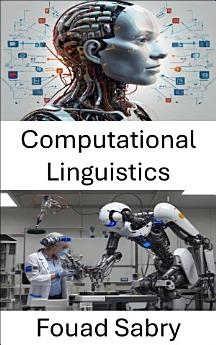Computational Linguistics: Language Models and Artificial Intelligence in Robotic Systems
මෙම ඉ-පොත ගැන
Chapters Brief Overview:
1: Computational linguistics: Explore the foundational concepts and methodologies of computational linguistics.
2: Natural language processing: Uncover the techniques that enable machines to understand human language.
3: Corpus linguistics: Examine the study of language through large collections of text, fundamental to machine learning.
4: Text corpus: Discover how corpora are used to train language models and improve NLP systems.
5: Wordsense disambiguation: Understand how machines discern meaning from words with multiple interpretations.
6: Cognitive linguistics: Explore the relationship between language and thought, essential for AI comprehension.
7: Partofspeech tagging: Learn how machines identify and categorize words in a sentence for processing.
8: Charles J. Fillmore: Delve into the work of Fillmore, whose theories have influenced modern linguistics and NLP.
9: Treebank: Study the annotated syntactic structure of language used in computational models.
10: Statistical machine translation: Examine how statistical methods are applied to machine translation systems.
11: Linguistic categories: Understand the classification of language elements and its role in NLP applications.
12: Language and Communication Technologies: Discover the technologies driving advancements in languagebased AI.
13: History of natural language processing: Gain insights into the evolution of NLP and its current significance.
14: SemEval: Explore the SemEval series of evaluations, crucial for assessing NLP tasks.
15: DELPHIN: Learn about the DELPHIN project and its contributions to computational linguistics.
16: John Nerbonne: Discover the influential work of Nerbonne in the realm of computational linguistics.
17: ISLRN: Study the role of the International Standard Language Resource Number in data sharing.
18: Emily M. Bender: Understand the pioneering contributions of Bender in linguistics and AI.
19: Functional linguistics: Dive into functional linguistics and its application to computational models.
20: Lexicology: Explore the study of words and their meanings, crucial for language processing.
21: Syntax: Learn the rules governing sentence structure, essential for AI language comprehension.
By bridging the gap between linguistics and technology, this book offers readers a comprehensive toolkit for understanding and advancing in computational linguistics. Whether you're a student eager to delve into the subject, a professional seeking to expand your expertise, or an enthusiast curious about the future of AI, this book is for you.











